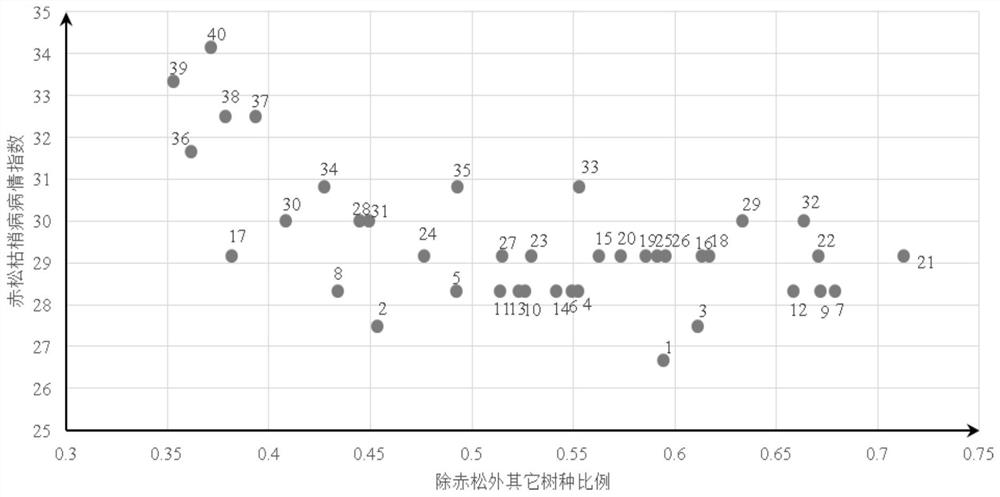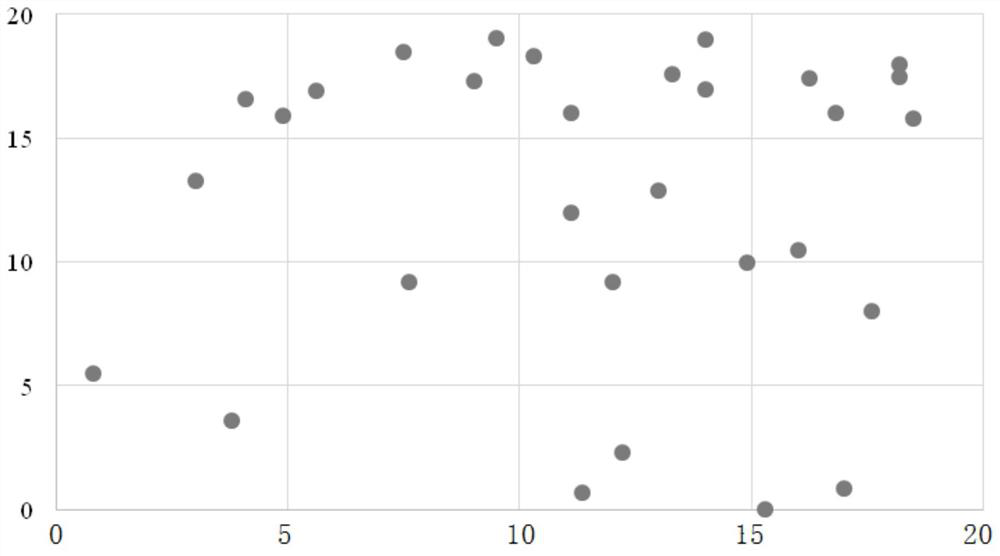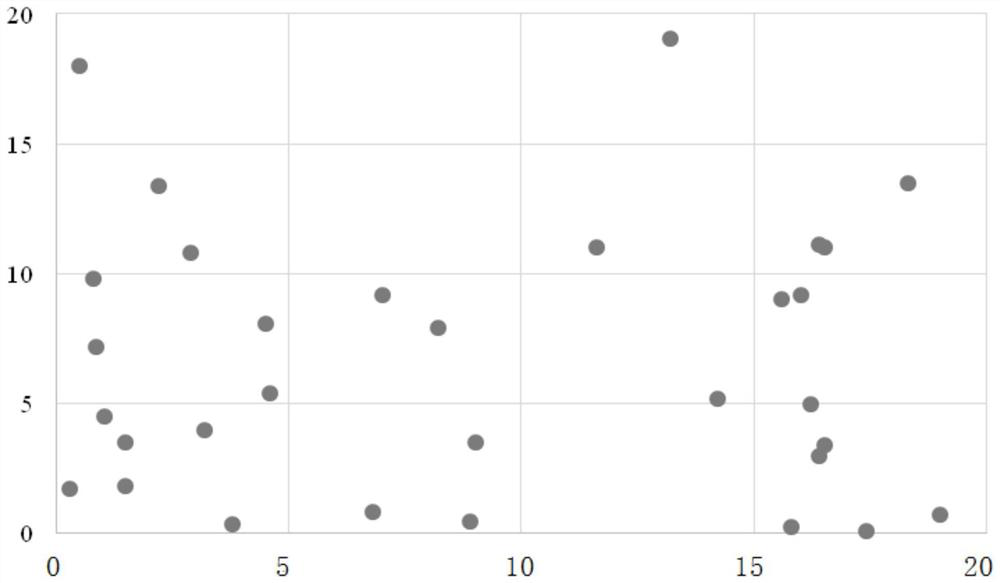Ecological prevention and treatment method for reducing damage of diplodia pinea to pinus densiflora
A technology of red pine and dead shoots, which is applied to the ecological control of red pine and the prevention and control of pine dieback diseases, can solve the threats to the healthy development of plant communities, affect the stability of red pine secondary forests, and rampant diseases, and achieve accelerated The effect of spreading pathogenic bacteria, avoiding control residues, and reducing the occurrence of diseases
- Summary
- Abstract
- Description
- Claims
- Application Information
AI Technical Summary
Problems solved by technology
Method used
Image
Examples
Embodiment 1
[0042] Example 1 Regulation of Pinus pinus dieback based on stand structure
[0043] (1) Allocation pattern of arbor species in the forest
[0044] The tree composition of the secondary forest of Red Pine in Kunyu Mountain was transformed, and the host Red Pine was mixed with other tree species——Quercus variabilis, Sophora japonica, Quercus spp. The proportions of Sophora japonica, Quercus japonica and A. chinensis reached 54.2%-55.2% of the total number of trees.
[0045] The tending and thinning operations were carried out in three stages. Thinning and tending objects are red pine with high density, weak tree vigor and poor living environment in the stand, and other tree species that grow well in the stand are reserved. The intensity of each thinning depends on the specific conditions of the stand and site. The general thinning intensity is The number of plants accounts for 9%-19% of the total number of plants before the first thinning. The thinning interval is 4 years, a...
experiment example 1
[0050] Experimental Example 1 Correlation analysis between tree species in the arbor layer and Pinus pinus dieback disease in the secondary forest community of Pinus kunyu in Kunyu Mountains
[0051] 1. Experimental method
[0052] 1.1 Overview of the research site
[0053] Kunyu Mountain (121°41′34″-121°48′04″E, 37°11′50″-37°17′22″N), located in the warm temperate deciduous broad-leaved forest area in the east of Shandong Peninsula, is the The area where the distribution of upper red pine is the most concentrated. Coniferous tree species include red pine, black pine, Huashan pine, larch and Chinese fir, etc.; broad-leaved tree species include Quercus variabilis, Cork oak, Saltwood and Sophora japonica, etc.; Understory plants include Huamulan, Cedarwood, Plum and Commelina Wait. The annual average temperature is 12.3°C, the annual precipitation is 800-1200mm, the annual average relative humidity is 62.6%, and the frost-free period is 200-220 days; the soil is mostly brown ...
experiment example 2
[0091] Experimental example 2 The experiment of determining the proportion of tree species in the secondary forest of Chinese pine
[0092] 1. Experimental method
[0093] According to the 120 temporary plots of Pinus pine secondary forest set up in Experimental Example 1, calculate the ratio of the sectional area at breast height of each tree species to the sectional area at breast height of all tree species in the plot to determine the stand type (less than 30% is pure forest, otherwise it is mixed forest) as Pinus chinensis - Mixed broadleaf forest, mixed pine-coniferous forest or pure pine forest. For each sample plot, according to the investigation of pine dieback disease in Experimental Example 1, the disease condition of pine dieback disease was analyzed. The occurrence of pinus dieback disease in red pine-broad-leaved mixed forest, red pine-coniferous mixed forest and red pine pure forest was compared. Screen out the representative plots in the lower disease forest s...
PUM
 Login to View More
Login to View More Abstract
Description
Claims
Application Information
 Login to View More
Login to View More - R&D
- Intellectual Property
- Life Sciences
- Materials
- Tech Scout
- Unparalleled Data Quality
- Higher Quality Content
- 60% Fewer Hallucinations
Browse by: Latest US Patents, China's latest patents, Technical Efficacy Thesaurus, Application Domain, Technology Topic, Popular Technical Reports.
© 2025 PatSnap. All rights reserved.Legal|Privacy policy|Modern Slavery Act Transparency Statement|Sitemap|About US| Contact US: help@patsnap.com



